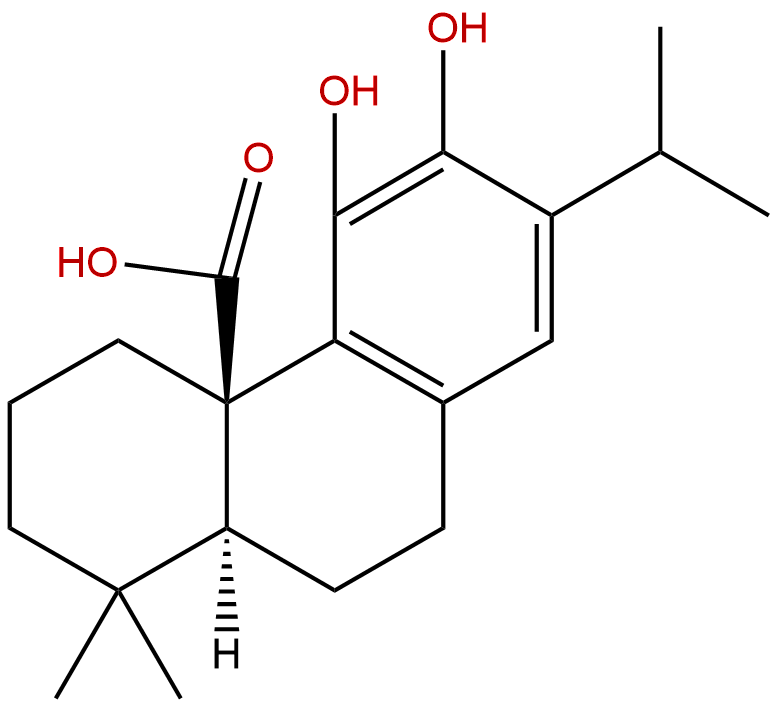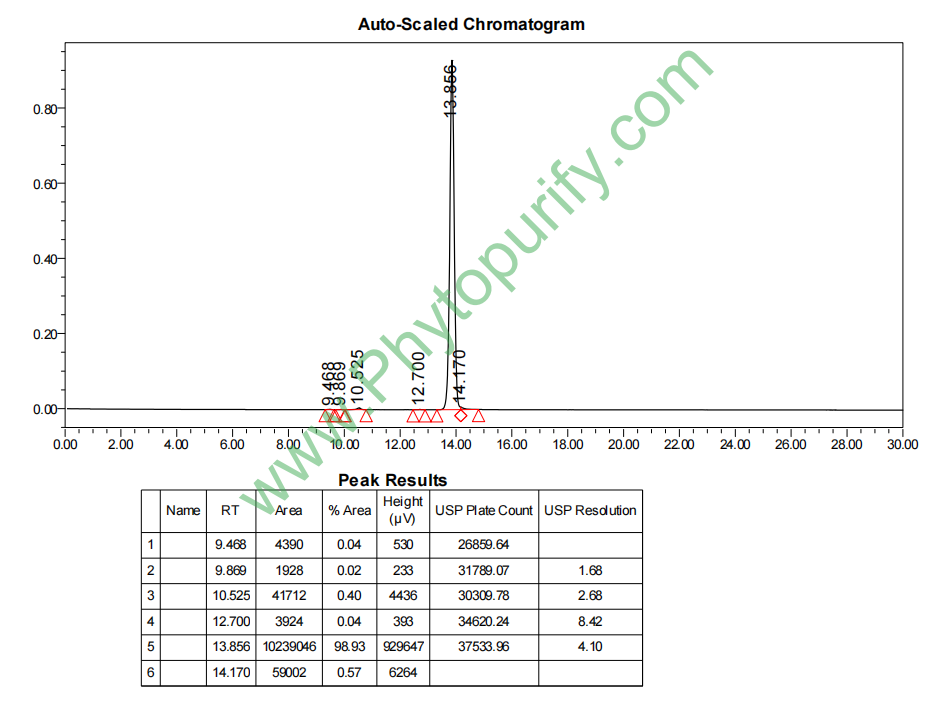
Carnosic acidCAS No.:3650-09-7
|
||||||||||
 |
|
|
||||||||

| Catalogue No.: | BP0316 |
| Formula: | C20H28O4 |
| Mol Weight: | 332.44 |
Synonym name: Deoxypicrosalvinic acid
Catalogue No.: BP0316
Cas No.: 3650-09-7
Formula: C20H28O4
Mol Weight: 332.44
Botanical Source: Salvia officinalis (sage), Salvia canariensis, Salvia apiana and Rosmarinus officinalis (rosemary)
Purity: 90%~99%
Analysis Method: HPLC-DAD or/and HPLC-ELSD
Identification Method: Mass, NMR
Packing: Brown vial or HDPE plastic bottle
Can be supplied from milligrams to grams,up to kilograms.
Inquire for bulk scale.
Two studies, led by Stewart Lipton, MD, PhD, from the Burnham Institute for Medical Research, in La Jolla, California, and Takumi Satoh, MD, PhD, from Iwate University, in Japan, which are published in the October 2007 issue of Nature Reviews Neuroscience and online November 8 in the Journal of Neurochemistry, show that CA activates a novel signaling pathway that protects brain cells from free radical damage, seen in stroke and other neurodegenerative conditions such as Parkinson's and Alzheimer's diseases.[1] [2]
Carnosol and carnosic acid have been suggested to account for over 90% of the antioxidant properties of rosemary extract. 2. Purified carnosol and carnosic acid are powerful inhibitors of lipid peroxidation in microsomal and liposomal systems, more effective than propyl gallate. 3. Carnosol and carnosic acid are good scavengers of peroxyl radicals (CCl3O2.) generated by pulse radiolysis, with calculated rate constants of 1-3 x 10(6) M-1 s-1 and 2.7 x 10(7) M-1 s-1 respectively. 4. Carnosic acid reacted with HOCl in such a way as to protect the protein alpha 1-antiproteinase against inactivation. 5. Both carnosol and carnosic acid stimulated DNA damage in the bleomycin assay but they scavenged hydroxyl radicals in the deoxyribose assay. The calculated rate constants for reaction with .OH in the deoxyribose system for carnosol and carnosic acid were 8.7 x 10(10) M-1 s-1 and 5.9 x 10(10) M-1 s-1 respectively. 6. Carnosic acid appears to scavenge H2O2, but it could also act as a substrate for the peroxidase system. 7. Carnosic acid and carnosol reduce cytochrome c but with a rate constant significantly lower than that of O2(-.). [3] From Wikipedia
References:
